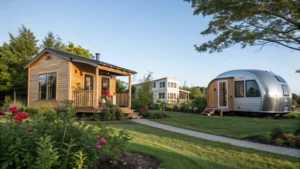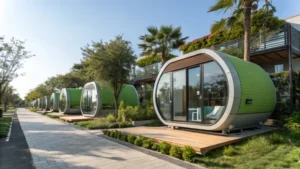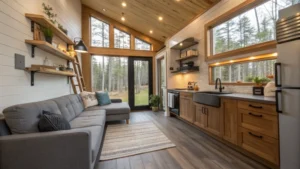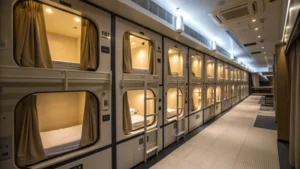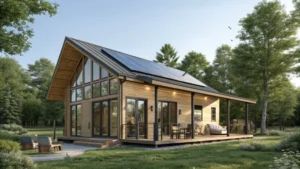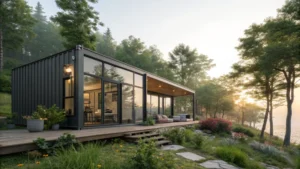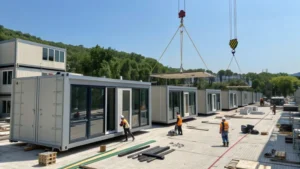
Imagine living in a home that combines affordability with sustainability. Shipping container homes promise just that, but are they the real deal?
Shipping container homes are an innovative housing solution offering affordability, rapid construction, and sustainability. Yet, they can also bring challenges like zoning restrictions, insulation issues, and resale value concerns. Understanding these factors is key to deciding if they are a wise investment for you.
While the initial appeal of shipping container homes is undeniable, it’s essential to delve deeper into their long-term viability. For instance, I once met someone who transformed a shipping container into a chic weekend retreat—complete with solar panels and a cozy interior that rivaled traditional cabins. Yet, they faced hurdles like local building codes and ensuring adequate insulation for harsh winters. Diving into these aspects helps us gauge whether these innovative structures can stand the test of time and offer true value compared to traditional homes.
Shipping container homes are cheaper to build than traditional homes.True
Container homes often cost less due to reduced material and labor expenses.
All shipping container homes face zoning restrictions.False
Zoning issues vary by location; not all areas impose restrictions.
What Are the Advantages of Shipping Container Homes?
Imagine transforming an ordinary shipping container into your dream home!
Shipping container homes are affordable, eco-friendly, and durable. They offer a customizable and sustainable housing solution tailored to modern living needs.
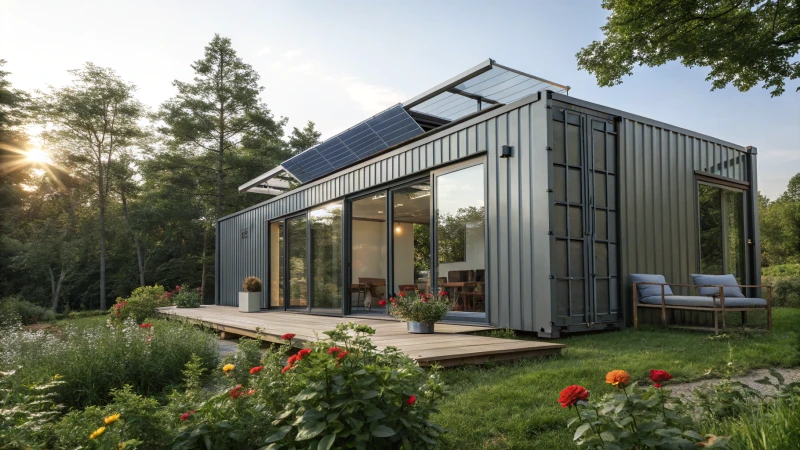
Cost-Effectiveness
If you're anything like me, always hunting for ways to save a buck while still getting the most bang for it, shipping container homes can feel like striking gold. I remember the thrill of realizing that I could sidestep the sky-high costs of land acquisition and traditional construction materials. Instead, with a shipping container, I found an affordable foundation for my home.
| Expense Type | Traditional Homes | Container Homes |
|---|---|---|
| Land Acquisition | High | Moderate |
| Construction Materials | High | Low |
| Labor Costs | High | Moderate |
By reusing materials and cutting down on labor costs, these homes became a beacon of hope for my budget-conscious dreams.
Sustainability
There was a moment when I stood in front of my newly acquired shipping container, imagining the tons of steel that would have otherwise just rusted away. It was like breathing life into something old, and it felt good. Shipping container homes champion sustainability by repurposing what already exists and minimizing waste. Adding sustainable features like solar panels and rainwater systems not only decreased my environmental footprint but also led to a cozy, eco-friendly living space.
- Recycling: The mere act of using an existing container saves on energy-heavy manufacturing processes.
- Energy Efficiency: With the right insulation and green tech, energy savings became a reality.
Durability and Strength
I still remember watching the news about an upcoming storm, feeling a wave of relief knowing that my home was built from a structure designed to endure the harshest conditions. These containers, originally crafted for oceanic transport, boast durability that's hard to match. They laugh in the face of high winds and tremble not before earthquakes.
Structural Integrity
The robust steel frame promised longevity with minimal fuss over maintenance. Durability studies1 suggest these homes can last as long as traditional ones if cared for properly.
- Wind Resistance: My home’s sturdy build offers peace of mind during storm season.
- Seismic Performance: Engineered to stand firm against tremors.
Customization and Flexibility
For someone who gets giddy at the prospect of rearranging furniture, the customization options with shipping container homes are a dream come true. Whether it's a quaint studio or an expansive family abode, these containers provide a canvas for creativity. With the right team, possibilities unfold like a blank page ready to be written on.
Design Options2 include:
- Open-plan layouts maximizing space efficiency.
- Modular setups enabling effortless expansion or reconfiguration.
- Aesthetic upgrades using eco-friendly materials.
It's about blending function with flair, creating spaces that not only meet needs but also delight the senses—a testament to why shipping container homes continue to win hearts.
Shipping container homes are more expensive than traditional homes.False
Container homes are cheaper due to lower material and labor costs.
Shipping container homes can withstand earthquakes.True
Their robust design makes them suitable for seismic activities.
Are There Hidden Costs in Container Home Construction?
Building a container home seemed like a brilliant idea to me, but then the hidden costs started sneaking up.
Hidden costs in container home construction often include permits, site preparation, insulation, and utility connections. Understanding these expenses helps prevent budget overruns and ensures the financial viability of the project.
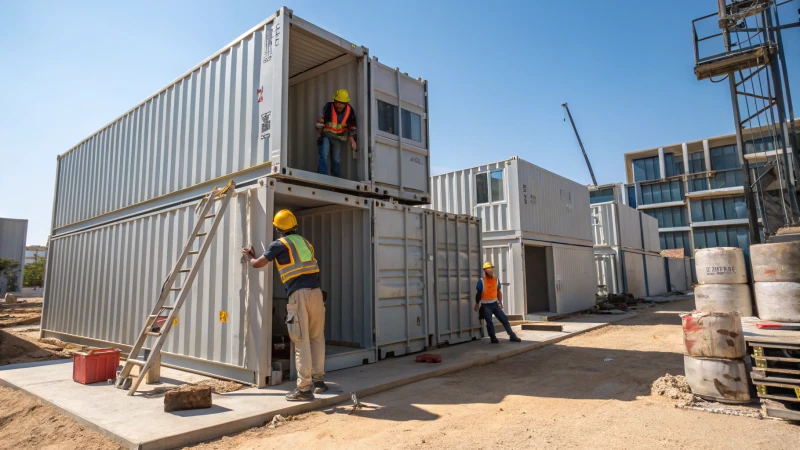
Permits and Regulations
One of the first surprises I encountered was the maze of permits and local building regulations. I thought stacking containers would be straightforward, but I quickly learned that zoning laws and building codes require specific permits, which can vary dramatically by location. Understanding these requirements3 is crucial.
| Permit Type | Average Cost Range |
|---|---|
| Building Permit | $500 - $2,000 |
| Zoning Permit | $1,000 - $5,000 |
Site Preparation
Then came the realization that site preparation wasn't just about finding a pretty spot to place my containers. The foundation had to be just right—excavation and leveling were necessary—and that's where expenses started to climb. Plus, preparing the land4 for utilities and sewage wasn't something I initially factored into my budget.
Insulation and Weatherproofing
Containers are made of steel, which is great for durability but terrible for insulation. I needed high-quality materials to make my container home cozy, which significantly impacted my costs. Finding the right materials to prevent heat loss and condensation was crucial for creating a comfortable living space.
| Insulation Type | Cost per Square Foot |
|---|---|
| Spray Foam | $1.50 - $3.00 |
| Rigid Foam | $1.00 - $2.50 |
Utility Connections
Connecting utilities like electricity, water, and sewage posed another set of challenges. Trenching and running pipes or wiring proved to be substantial expenses, especially since my chosen location was a bit off the beaten path. Planning for these utility connections5 early on was essential to avoid delays.
Professional Services
Lastly, hiring architects or contractors who specialize in container homes was something I hadn't planned on initially. Their expertise ensured compliance with regulations and quality standards, which saved me from costly mistakes down the line. However, including professional fees in my budget from the start would have been wise.
Understanding these hidden costs upfront can make or break your container home project. With some thorough research and careful planning, it's possible to sidestep these surprises and keep your build on track.
Building permits for container homes cost over $2,000.False
The average cost range for building permits is $500 to $2,000.
Insulation is essential for container home livability.True
Steel containers require insulation to prevent heat loss and condensation.
How Do Shipping Container Homes Fare Against Building Regulations?
Ever wondered if those trendy shipping container homes can actually meet building regulations? Let's dive into the reality of making these eco-friendly havens legal and livable.
Shipping container homes need to comply with local building codes, covering aspects like structural integrity, safety, and zoning laws. Meeting these codes ensures that your unique home is both safe and legal.
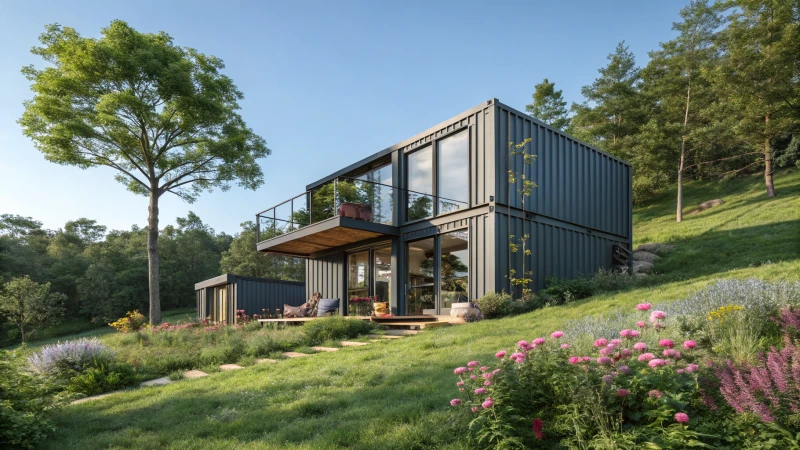
Understanding Building Codes and Standards
When I first considered building a shipping container home, I was intrigued by the idea of turning something so industrial into a cozy living space. However, I quickly realized that these homes aren't exempt from standard building codes6. Just like traditional houses, they must pass the tests for structural integrity, proper insulation, and safe plumbing and electrical systems. For instance, my area required detailed, engineered plans to ensure that these standards were met, which was a bit daunting at first.
| Aspect | Requirements |
|---|---|
| Structural Integrity | Must withstand local weather conditions |
| Insulation & Ventilation | Meet energy efficiency standards |
| Plumbing & Electrical | Adhere to local codes |
Navigating Zoning Laws
Zoning laws were another hurdle I had to jump through. Depending on where you live, these laws can significantly impact where you can place your shipping container home. In my case, researching the local municipalities7 helped me understand the specific zones where such innovative housing solutions are permitted. Often, residential zones have the strictest regulations, while rural areas might offer more freedom.
- Residential Zones: Often have the strictest regulations.
- Commercial Zones: May allow more flexibility.
- Rural Areas: Typically have fewer restrictions.
Securing Necessary Permits
Getting the right permits felt like crossing a finish line. It's crucial to secure these before starting any construction. I had to submit detailed plans to local authorities to prove that my project adhered to all safety regulations. It's also essential to verify if there are any restrictions on modifying shipping containers for residential use.
| Permit Type | Purpose |
|---|---|
| Building Permit | Ensures compliance with construction codes |
| Electrical Permit | Required for all electrical installations |
| Plumbing Permit | Necessary for plumbing work |
Overcoming Regulatory Challenges
At times, it felt like my shipping container home didn’t quite fit into any traditional category, leading to extended approval processes. It's helpful to work with professionals who have experience in alternative housing. Early consultation8 with local authorities can be a game-changer. Addressing potential issues before they arise made the entire process smoother for me.
Shipping container homes must meet the same building codes.True
They must adhere to structural, insulation, plumbing, and electrical standards.
Zoning laws rarely affect shipping container home placement.False
Zoning laws can restrict where these homes are placed as residential buildings.
What Should You Consider When Buying a Shipping Container Home?
Imagine turning a simple shipping container into your dream home! Before you dive in, let's explore some vital considerations to ensure your investment is sound.
Before buying a shipping container home, I need to consider local zoning laws, structural integrity, insulation needs, and overall cost. These factors will ensure my home is legal, durable, comfortable, and within budget.
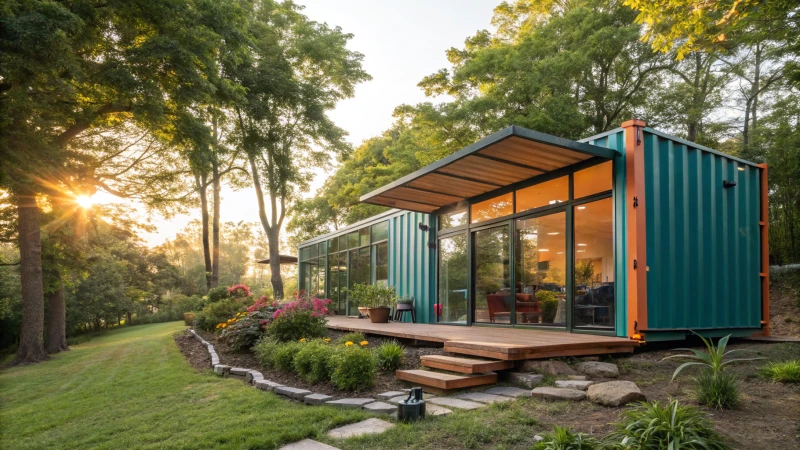
Local Zoning Laws and Regulations
When I first looked into buying a shipping container home, the excitement of living in such a unique space was overwhelming. However, I quickly learned the importance of understanding local zoning laws9. Different areas have varying regulations regarding the use of shipping containers as residential structures. I had to ensure that my dream project complied with these laws to avoid any legal hassles down the road.
A helpful tip? Contact your local planning department or consult a zoning lawyer. This way, you can navigate the maze of regulations with confidence.
Structural Integrity and Durability
One of the things that drew me to shipping container homes was their inherent durability. They're built to withstand harsh conditions at sea, but repurposing them into homes means considering structural modifications. I learned that engaging a structural engineer was crucial to assess any required changes to the container's frame. This step ensures my home's safety during adverse weather conditions.
For example, adding windows or doors can weaken the container's original structure. But with proper reinforcement, I could maintain the integrity of my home while still getting the design I wanted.
Insulation and Climate Considerations
I realized quickly that without proper insulation10, living in a steel box could mean dealing with extreme temperatures. Choosing high-quality insulation materials suited to my local climate was vital for comfort and energy efficiency.
Options for insulation include spray foam, which provides excellent thermal resistance and seals against moisture, or rigid panels that offer strong temperature control.
| Insulation Type | Advantages | Disadvantages |
|---|---|---|
| Spray Foam | High R-value, moisture barrier | Higher cost, specialist needed |
| Rigid Panels | Cost-effective, easy installation | Less effective than spray foam |
Cost and Budgeting
One misconception is that shipping container homes are always cheaper than traditional houses. I found that costs could quickly escalate depending on customization needs and quality of materials. Planning my budget carefully was crucial.
Here's what I considered:
- Container Purchase: Prices vary based on size and condition.
- Modifications: Structural changes can add significant costs.
- Insulation and Finishing: I chose materials that balanced cost and effectiveness.
Researching thoroughly and obtaining quotes from multiple vendors helped me make informed decisions. For more insights on budgeting for a container home, I explored online forums and resources dedicated to container home builders11. It’s all about finding that balance between dreams and reality.
Local zoning laws can prohibit container homes.True
Zoning laws vary by location and may not permit residential use of containers.
Spray foam insulation is the cheapest option for containers.False
Spray foam offers high thermal resistance but is more expensive than rigid panels.
Conclusion
Shipping container homes offer affordable, sustainable living but come with challenges like zoning laws, insulation needs, and hidden costs. Understanding these factors is crucial for potential buyers.
-
Learn about the structural integrity and longevity of shipping container homes. ↩
-
Find inspiration for customizing shipping container homes to suit your style. ↩
-
Explores how building and zoning permits affect container home projects. ↩
-
Provides insights on potential site preparation challenges for container homes. ↩
-
Explains utility connection requirements for container home projects. ↩
-
Provides detailed insights into what standards must be met for legal compliance. ↩
-
Helps identify if your area allows shipping container homes and under what conditions. ↩
-
Guides you on professional services that can assist with the permit application process. ↩
-
Understanding zoning laws is crucial to ensure your shipping container home is legally compliant. ↩
-
Discovering effective insulation methods helps maintain comfortable living conditions in your container home. ↩
-
A detailed cost breakdown helps in budgeting effectively for your container home project. ↩



